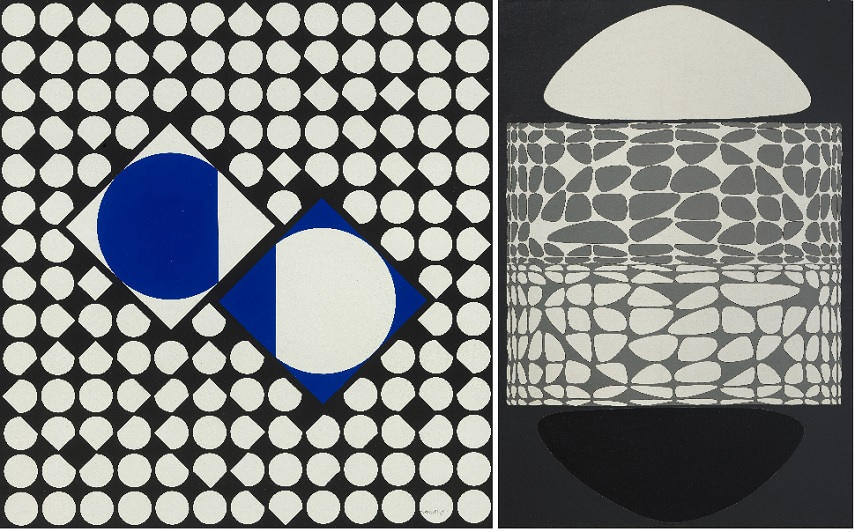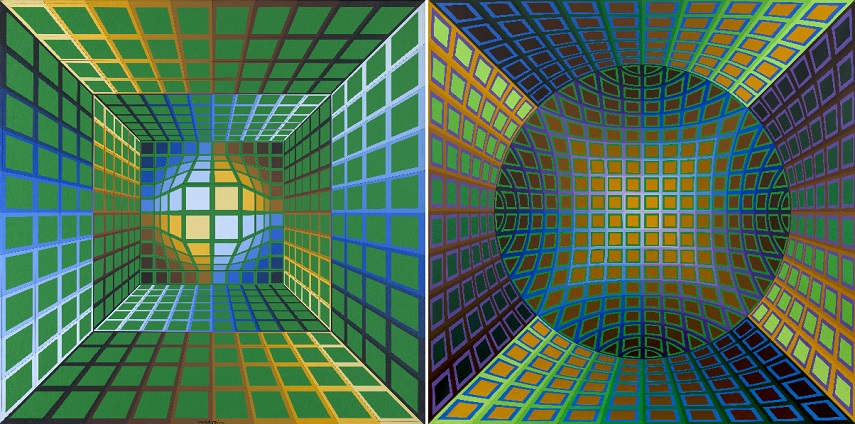Mazzoleni Brings Together Ten Major Works by Victor Vasarely, Covering Almost His Entire Career
In 1930, Victor Vasarely (1906 -1997), or Győző Vásárhelyi as he was then called, left his home country, Hungary, for the world art center Paris. Following his artistic interests, he moved to the hub of avant-garde art, where he continued experimenting with visual forms using basic geometric shapes.
The father of the Op Art movement, Vasarely created, in the next few decades, works that would define the movement and bring him world fame. His pieces trick the human eye into believing it sees movement, volume, and light changes where there are only flat lines and colors. In later years, Vasarely would also develop the Plastic Alphabet, through which he tried to systematize his approach and artistic ideas.
Honoring his legacy, the Mazzoleni Art gallery in London has prepared an exhibition of his early and mature works titled Victor Vasarely: Einstein in the Sky with Diamonds.

Early Works and Experiments
Some of the first Victor Vasarely's compositions will be on view, starting with the compositions in which the artist experimented with the activation of the surface using small, repeated geometric units and the alterations of black and white patterns. Among them are Tampico-5 (1953) and several others from the same period considered the founding pieces of Op Art.
In the following decade, Vasarely purified his visual language, rationalizing the use of geometric units and distributing them inside grids. The variations of tones and shades were modulated with precision, as evident from Arc Tur (1968).
In creating his pieces, Vasarely also used preliminary drawings and scales, or the so-called programmations, which are also included in the show. The intricate patterns modulate the surface, generating light waves that radiate toward the viewers.

Inspired by Science
A dominant piece at the show is Einstein-Ker (1976), a large canvas that refers to the founder of the theory of relativity, Albert Einstein. Vasarely followed the scientific discoveries of his time and, fascinated with what he learned and heard, decided to translate them into plastic equivalents.
The formal elements Vasarely created and used in his creations are not pure equivalents of the artist's geometric calculations and visual experiments but are also his attempts to reflect broader philosophical and scientific ideas of his time, especially the ones linked to exploring the physical properties of the universe. Looking for the proper expression of its different dimensions and the invisible manifestations of matter, Vasarely created art that captures the imagination of generations.
His positives and negatives are, for example, visually expressed hypotheses of anti-matter and the existence of mirror universes. Each unit is a simple particle from contemporary physics that can, through optical vibrations, transpose the infra-atomic energies, the artist believed, while the grid stands for the distortions of the spatial-temporal continuum.

Vasarely at Mazzoleni
The exhibition Victor Vasarely: Einstein in the Sky with Diamonds will be on view at the Mazzoleni Art gallery in London from October 12th to December 16th, 2022. Curated by Arnauld Pierre, the show is accompanied by a catalog in which Pierre discusses the scientific poetics at the heart of Vasarely's universalist art language.
Featured image: Victor Vasarely - Arc Tur, 1968. Signed (lower centre): "Vasarely"; signed, titled and dated (on the reverse): "Vasarely 'Arc Tur' 1968 180 x 180". Acrylic on canvas, 180 x 180 cm, 70 7/8 x 70 7/8 in. All images courtesy of Mazzoleni Art.
Can We Help?
Have a question or a technical issue? Want to learn more about our services to art dealers? Let us know and you'll hear from us within the next 24 hours.
